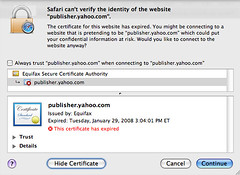Big security problems with the current way Firefox handles extensions
From Help Net Security’s “Zero-day vulnerabilities in Firefox extensions discovered” (20 November 2009):
At the SecurityByte & OWASP AppSec Conference in India, Roberto Suggi Liverani and Nick Freeman, security consultants with security-assessment.com, offered insight into the substantial danger posed by Firefox extensions.
Mozilla doesn’t have a security model for extensions and Firefox fully trusts the code of the extensions. There are no security boundaries between extensions and, to make things even worse, an extension can silently modify another extension.
Any Mozilla application with the extension system is vulnerable to same type of issues. Extensions vulnerabilities are platform independent, and can result in full system compromise.
Big security problems with the current way Firefox handles extensions Read More »

